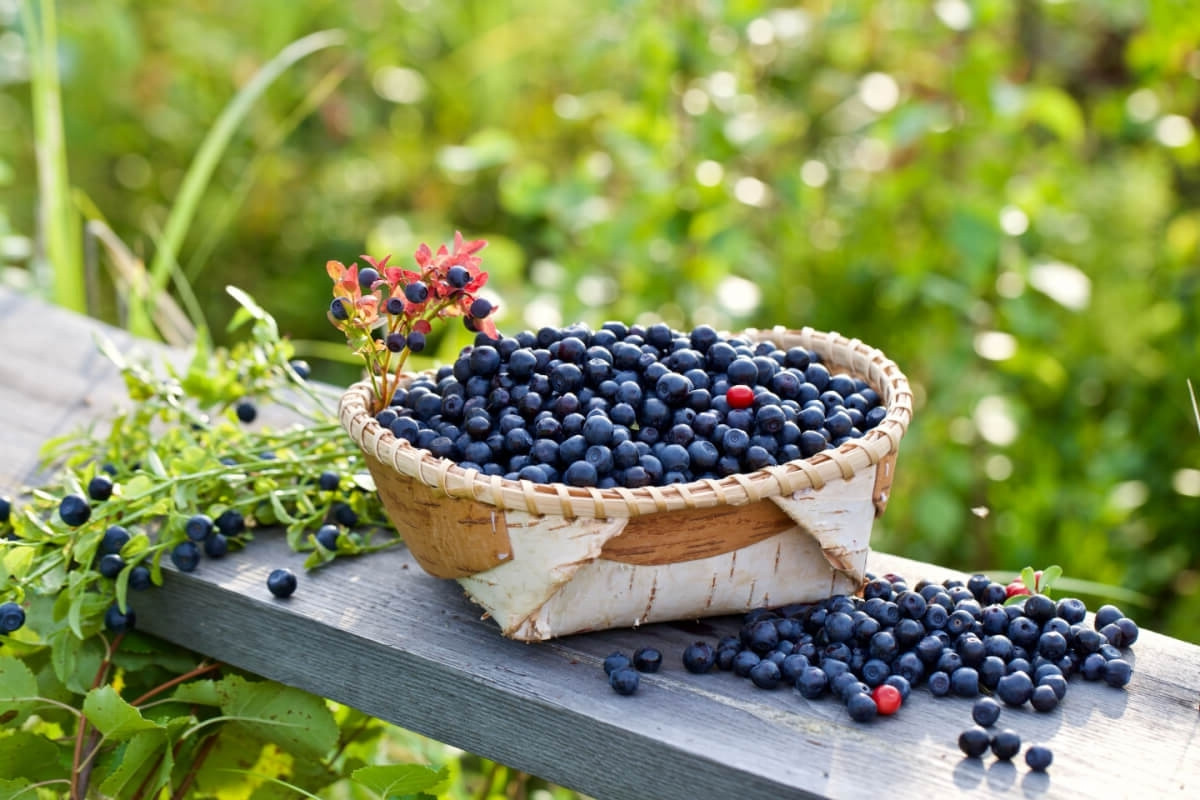
Bilberries, often confused with blueberries, are small, dark blue berries packed with nutrients and history. Found mainly in Europe, these berries have been used for centuries in traditional medicine and cuisine. Bilberries are rich in antioxidants, vitamins C and K, and fiber, making them a superfood. They grow wild in forests and are known for their tangy, slightly sweet flavor. Unlike cultivated blueberries, bilberries are smaller and grow singly or in pairs on low bushes. Their deep color stains everything, a testament to their high anthocyanin content. Curious about these tiny powerhouses? Let's dive into 26 fascinating facts about bilberries!
What is Bilberry?
Bilberry, a small, dark blue fruit, is often confused with blueberries. However, bilberries have their own unique characteristics and benefits. Let's dive into some fascinating facts about this lesser-known berry.
-
Bilberries are native to Europe, particularly in the northern regions. They thrive in acidic, nutrient-poor soils.
-
Unlike blueberries, bilberries grow singly or in pairs rather than in clusters. This makes harvesting them more labor-intensive.
-
The scientific name for bilberry is Vaccinium myrtillus. It belongs to the same family as cranberries and huckleberries.
-
Bilberries have been used in traditional medicine for centuries. They were believed to improve vision and treat various ailments.
-
During World War II, British pilots reportedly ate bilberry jam to enhance their night vision. This led to further research on bilberries' effects on eyesight.
Nutritional Benefits of Bilberries
Bilberries are not just tasty; they are packed with nutrients that offer numerous health benefits. Here are some key nutritional facts:
-
Bilberries are rich in antioxidants, particularly anthocyanins, which give them their deep blue color. These antioxidants help combat oxidative stress in the body.
-
They are a good source of vitamins C and K. Vitamin C boosts the immune system, while vitamin K is essential for blood clotting and bone health.
-
Bilberries contain dietary fiber, which aids in digestion and helps maintain a healthy gut.
-
They have a low glycemic index, making them a suitable fruit for people with diabetes. They help regulate blood sugar levels.
-
Bilberries are low in calories, making them a great snack for those looking to maintain or lose weight.
Health Benefits of Bilberries
Beyond their nutritional value, bilberries offer several health benefits. Here are some notable ones:
-
Bilberries may improve vision and eye health. Studies suggest that they can help prevent age-related macular degeneration and cataracts.
-
They have anti-inflammatory properties, which can help reduce inflammation in the body and alleviate symptoms of conditions like arthritis.
-
Bilberries may support cardiovascular health by improving blood circulation and reducing the risk of heart disease.
-
They have been shown to enhance brain function and memory. The antioxidants in bilberries protect brain cells from damage.
-
Bilberries may help lower blood pressure due to their high levels of anthocyanins.
Culinary Uses of Bilberries
Bilberries are versatile and can be used in various culinary applications. Here are some ways to enjoy them:
-
Bilberries can be eaten fresh or dried. Fresh bilberries are often used in desserts, while dried ones make a great addition to cereals and trail mixes.
-
They are commonly used in jams, jellies, and preserves. Bilberry jam is a popular spread in many European countries.
-
Bilberries can be baked into pies, tarts, and muffins. Their tart flavor adds a unique twist to baked goods.
-
They can be made into sauces and syrups, which pair well with pancakes, waffles, and ice cream.
-
Bilberries are sometimes used to flavor liqueurs and wines, adding a fruity note to alcoholic beverages.
Growing and Harvesting Bilberries
Growing bilberries can be a rewarding experience, but it requires specific conditions. Here are some facts about cultivating bilberries:
-
Bilberries prefer acidic soil with a pH between 4.5 and 5.5. They thrive in well-drained, sandy soils.
-
They require a cool climate and are often found in mountainous regions. Bilberries are hardy and can withstand frost.
-
Bilberries are typically harvested in late summer, around August and September. The berries are handpicked due to their delicate nature.
-
Bilberry plants can be propagated through seeds or cuttings. However, growing them from seeds can be challenging and time-consuming.
-
Bilberries have a symbiotic relationship with mycorrhizal fungi, which help them absorb nutrients from the soil.
-
Bilberry bushes can live for several decades, providing a long-term source of fruit for those who cultivate them.
The Final Scoop on Bilberries
Bilberries pack a punch when it comes to health benefits. These tiny berries are loaded with antioxidants, vitamins, and fiber. They can help improve vision, boost immunity, and even support heart health. Plus, they taste great in a variety of dishes, from smoothies to pies.
Whether you’re looking to enhance your diet or just enjoy a tasty treat, bilberries are a fantastic choice. They’re versatile, nutritious, and easy to incorporate into your meals. Remember, fresh or dried, these berries can make a big difference in your overall well-being.
So next time you’re at the market, grab some bilberries and give them a try. Your body will thank you, and your taste buds will too. Happy snacking!
Was this page helpful?
Our commitment to delivering trustworthy and engaging content is at the heart of what we do. Each fact on our site is contributed by real users like you, bringing a wealth of diverse insights and information. To ensure the highest standards of accuracy and reliability, our dedicated editors meticulously review each submission. This process guarantees that the facts we share are not only fascinating but also credible. Trust in our commitment to quality and authenticity as you explore and learn with us.
